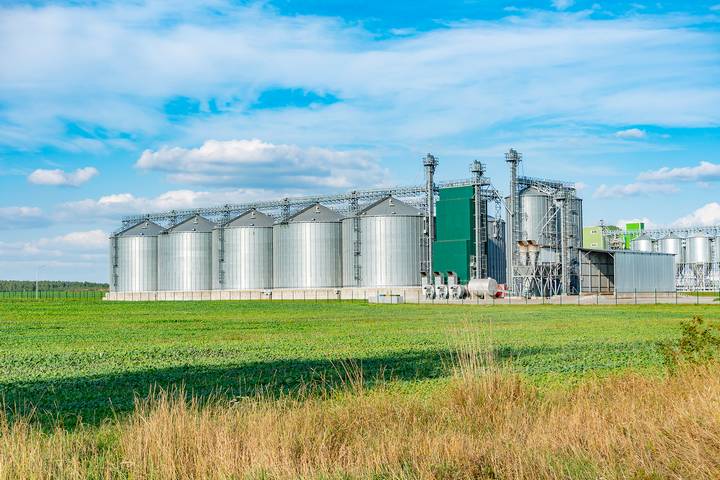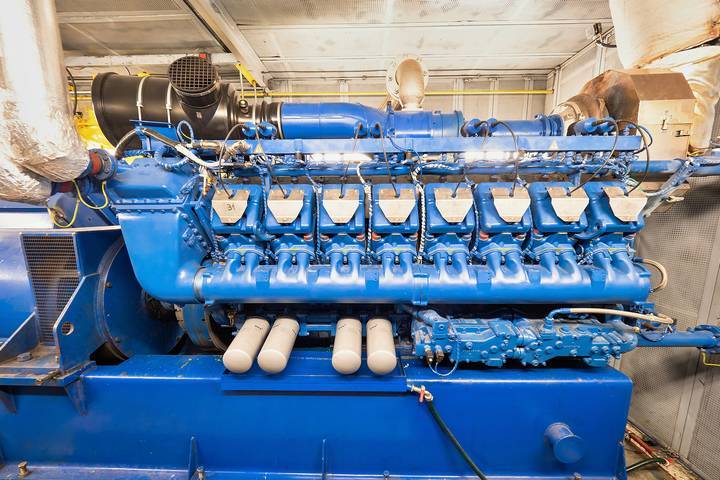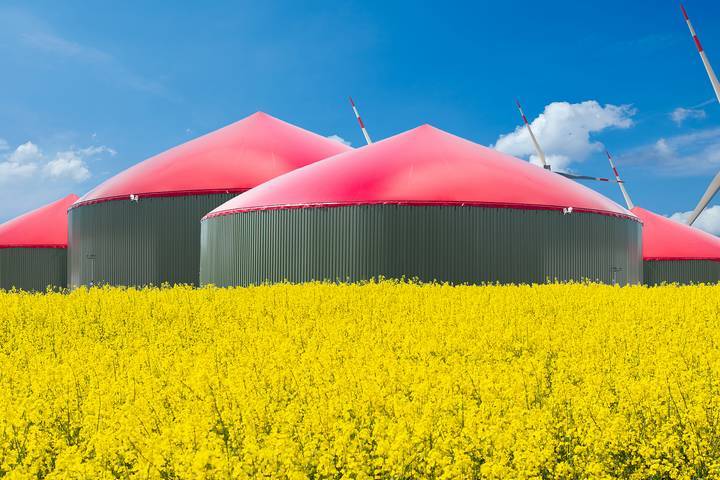How Does Biogas Work: Production & Uses
Did you know that renewable energy organizations have partnered with over 600 communities globally to install biogas systems? For instance, more than 4300 people in Nepal have embraced biogas technology for their fertilizer production needs, heating, and daily cooking. Many people understand the benefits associated with biogas production with little knowledge of how it works.
Therefore, here is a rundown on how biogas works alongside other crucial details.
What is Biogas?

Biogas refers to a renewable and environment-friendly energy source primarily generated through a process that involves the breakdown of organic matter by microorganisms and without oxygen. This process is called Anaerobic digestion.
Organic matters include waste materials from animals and plants. Biogas can be produced through an industrial process to generate it as fuel or naturally through anaerobic digestion.
How is Biogas Produced?

The main answer to ‘How does biogas work’ revolves around its production process and usage. Biogas production involves a series of steps spanning different manual and microbial activities. The steps include:
Collection of Feedstock
You can hardly initiate biogas production without collecting the relevant organic matters required. These organic matters include human, animal, and plant wastes such as manure, food waste, energy crops, and sewage sludge. Each organic matter boasts its unique method of collection.
For instance, livestock and human waste through flushing or scraping manure from their respective host into the collection systems. Food waste can be acquired from residential, industrial, or commercial setups and transported to the biogas production center. Sewage treatment plants offer for free or sell sludge to biogas producers for further processing.
Separation and Treatment
Not all collected feedstocks are directly welcomed into biogas production systems. They are first sorted out to separate the important ones from the rest, which are then treated for further processing.
The biogas upgrading and treatment process is usually undertaken after collecting and separating feedstock. It involves searching for other non-degradable waste that might have been missed in the initial separation. It is then shredded for greater surface area, stabilizing the carbon/nitrogen ratio and balancing the moisture levels.
Hydrolysis
The treated feedstock is shifted to a digester free from oxygen for hydrolysis. This process involves breaking the organic matter into less complex compounds through an enzyme-powered process. The organic matter’s fats, carbohydrates, and proteins are converted to fatty acids, sugars, and amino acids.
Fermentation
After hydrolysis comes fermentation (acidogenesis), where the amino acids, sugars, and fatty acids are further converted to organic acids such as butyric, propionic, and acetic. The compounds produced in this phase are more complex than its predecessors. The above acids are converted into carbon dioxide, hydrogen, and acetic acid through the acetogenic bacteria, which are then used in the methanogenesis phase.
Methanogenesis
During methanogenesis, the intermediate in the hydrolysis phase is converted into methane (CH4) and carbon dioxide (CO2) with the help of methanogenic archaea. The methane and carbon dioxide-filled gas is the long-desired end product of biogas production. There are other compounds in the final compound, such as nitrogen, oxygen, hydrogen, and moisture, although in insignificant amounts.
How to Tap and Use Biogas

Although biogas production ends at the methanogenesis phase, the producers must tap the end product and use it in different fields of life. The methane and carbon dioxide-rich gas accumulates above the digester and is collected and piped out of the structure for further processing and usage.
Before usage, raw biogas undergoes processes such as filtration to eliminate impurities and conditioning it to adjust its properties and composition. It is then compressed to acquire enough pressure for transportation and storage while awaiting distribution to various centers for supply.
Uses of Biogas

Biogas can be used in different ways, including:
- It can be used as fuel in vehicles as it imitates natural gas when upgraded and compressed. Liquefied (LNG) and Compressed Natural Gas Vehicles (CNG) are suitable for biogas.
- It can generate electricity from turbines and gas engines to be used in different ways, such as heating, lighting, and manufacturing.
- Biogas can be used for cooking through Liquid Petroleum Gas or naturally placed over cooking appliances such as stoves.
- Biogas can displace carbon dioxide in CHP plants and be used in hydrogen fuel cells.
Other uses of biogas include replacing natural gas after it has been upgraded to biomethane, fueling generators and other equipment, and as fertilizer through bio-slurry (digestate). The byproduct of biogas production is highly rich in organic nutrients.
Why is Biogas Considered an Energy Source?

You could ask yourself why biogas is taking over the statistics as an energy source. It’s because it’s a renewable energy source, thus more eco-friendly than its counterparts. Secondly, the biogas production process is less costly, making the end product more affordable to different communities across the globe. The world can be assured of significantly reducing waste from the environment by embracing biogas as the leading energy source.
While biogas has a few drawbacks, including a strenuous harvest, the pros outweigh the cons by giving you every reason to embrace it as your primary energy source. Hopefully, you have understood how the compound works as you may seek to start your biogas firm. You can liaise with established biogas center managers and innovators to gain more ideas about the process.

